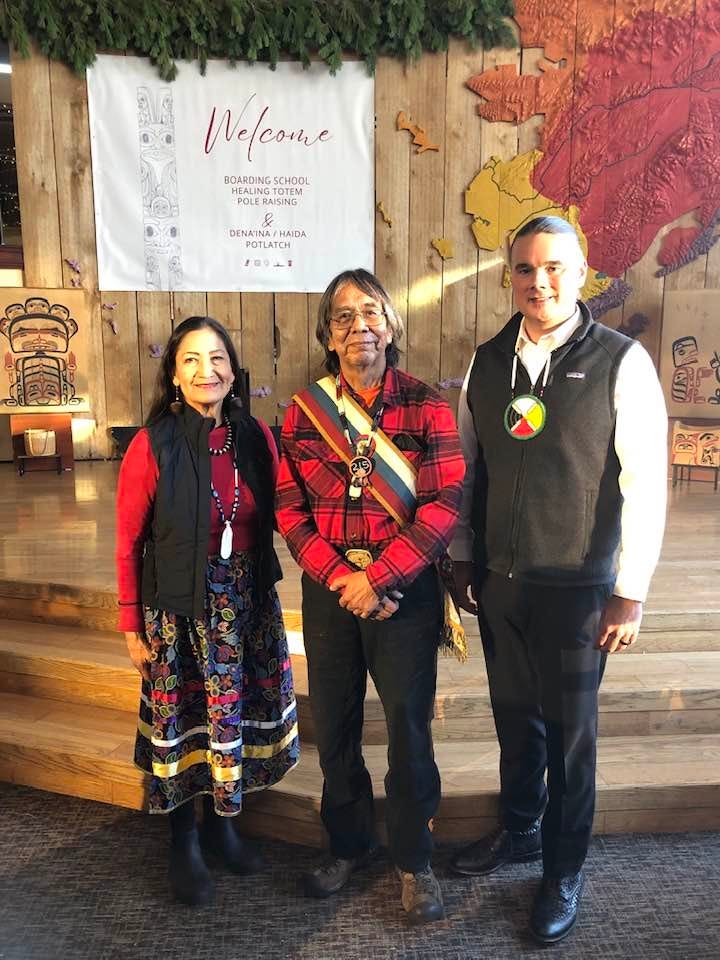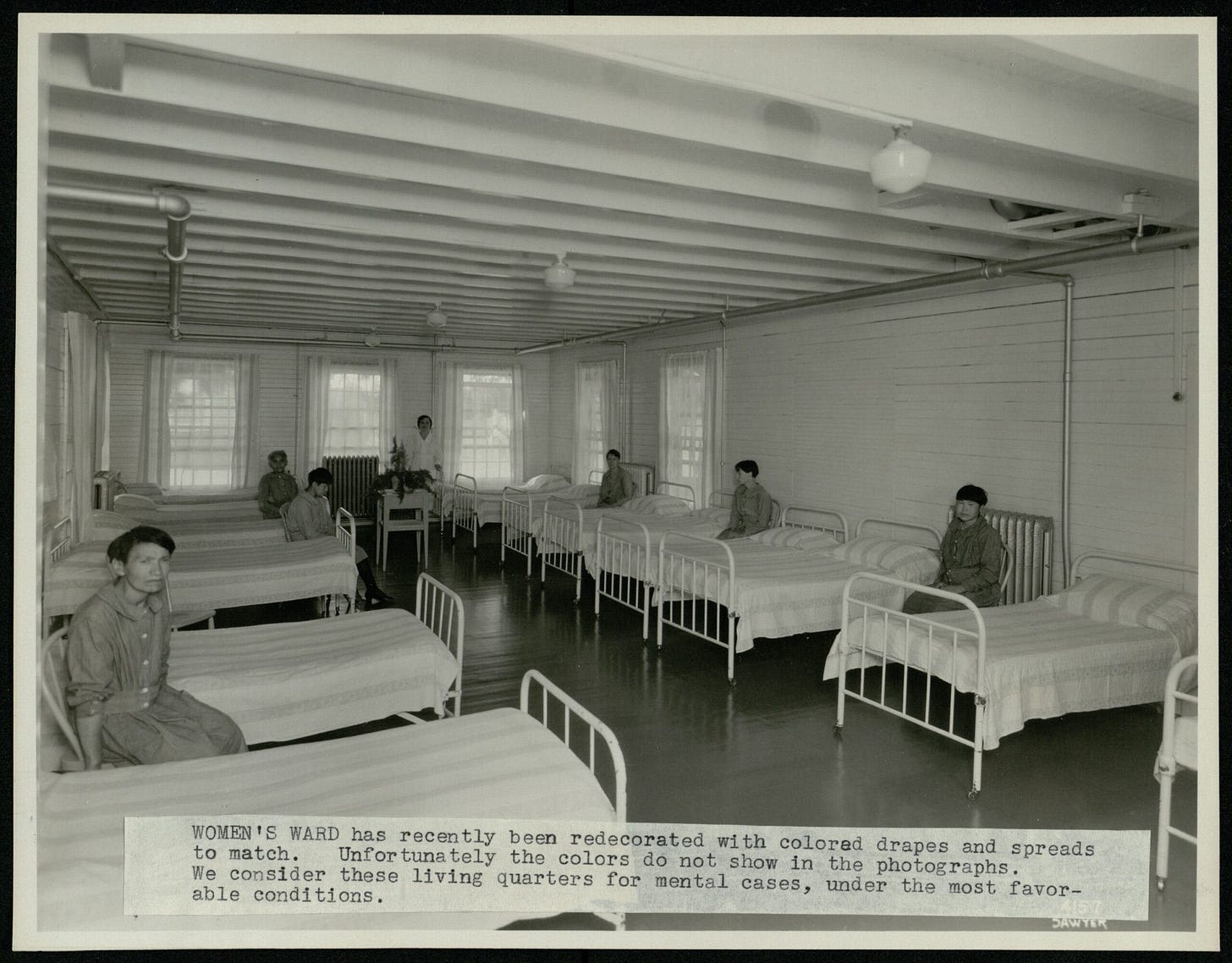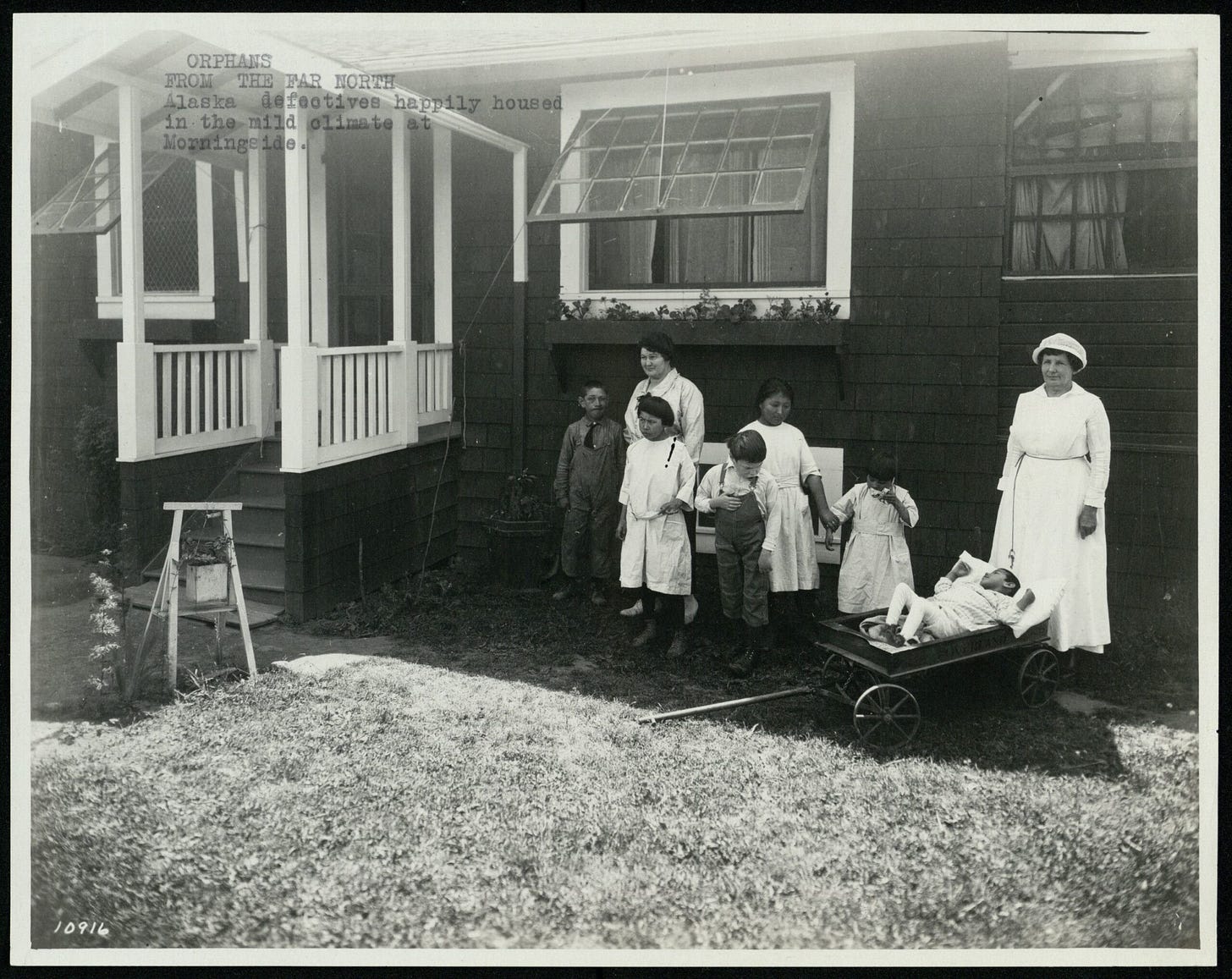My father calls on Haaland to Expand the Investigations
The practices at Indian boarding schools were not isolated, and the institutions being investigated need to be expanded.
My dad gave testimony as a descendant of my Grandmother, who was a survivor of the Wrangell Institute, at the Alaska stop for the Truth and Healing tour, where he called on Deb Haaland to expand the investigations. I introduced you all to him and his repatriation work in March here:
Ancestors are coming home.
In January, ProPublica released a heartbreaking report. American institutions are still holding 110,000 indigenous remains. Despite the 1990 Native American Graves Protection and Repatriation Act (NAGPRA), a federal law meant to facilitate the return of indigenous remains and artifacts from federally funded universities and museums.
He has been informing me about his work involving Morningside for several months; there are plans for him to travel to Oregon to begin the process of bringing the remains home to reunite with their families. The history is dark and traumatizing. I have broken down several times, attempting to process the information. Trigger warning going forward:
He says the remains of these children need to be returned to their families, so they can heal. Sam also says the Interior Department’s investigation needs to cast a wider net — to include institutions like the Morningside mental hospital in Portland, Oregon.
Before statehood and into the early 1960s, children with physical and intellectual disabilities were sent to the asylum. Many never returned. Some died.
“This gets even deeper,” Sam said. “You know how Morningside was funded — the Department of Interior.”
Sam told the secretary there was also an orphanage called Baby Louise Haven in nearby Salem, where Alaska Native babies and toddlers died. It was also funded by the federal government.
“I think it’s critically important for us to know this history,” said Niesje Steinkruger, a former Fairbanks judge, who came out of retirement to launch the Lost Alaskans Project.
Steinkruger says it’s important to know the history, to prevent the mistakes of the past from re-occurring. That’s why she and other volunteer researchers have combed court records at the State Archives in Juneau to find out what happened to Alaskans who were sent to Morningside and Baby Louise Haven. Steinkruger agrees with Bob Sam, that families deserve answers.
“We know that there were at least 1,500 Alaskans that died at Morningside Hospital and never came home to Alaska,” Steinkruger said.
These deaths involved mostly adults, both white and Alaska Native, but Steinkruger says most of the children, based on archival photographs, appear to be Native.
She says one photo stands out — a picture of a group of children outdoors. There are hand-typed words in the left-hand corner that read, “Alaska defectives, happily in the mild climate at Morningside.”
Steinkruger says she also came across some disturbing correspondence between staff at Baby Louise Haven and the state of Alaska.
“I just remember this one letter asking about up to what age child they would take,” Steinkruger said. “Well, the children had to be under four feet, because the enclosed cribs, as they call them, which is like a crib cage — (so) a child could not be longer than four feet to fit in there.”
Steinkruger says, based on records of family names, most of the children at Baby Louise Haven were Alaska Native. She says the government entities that took charge of these children have a responsibility to help their families.
“Find their remains,” she said. “And bring the remains back to Alaska for their families.”
Steinkruger acknowledges that it would be a costly process to repatriate the remains, but says it’s the right thing to do.
As for Bob Sam, he’s planning a trip to Portland soon to visit the graves of the children who died at Morningside. He says he will drink tea, talk to them and sing songs in the Lingít language.
“Let’s be the best of who we are,” Sam said. “And let’s bring our children home.”
And that, says Sam, is the first step on the road to healing.
There are investigations taking place all across the country. If you missed my last update, it’s here:
Work to return Indigenous remains and artifacts takes place across the U.S.
Content Warning: This week’s newsletter is heavy, and hard for me to formulate my thoughts. Below are segments from linked articles with more information on each subject. What’s important to take from this is that we have a long way to go regarding repatriation. The work is just getting started, and some institutions are less responsive than others. Thi…
I am going to have some tea and cry. And call my dad.








